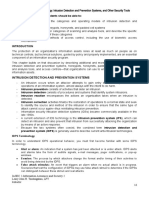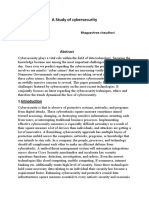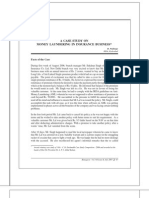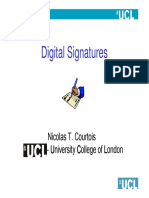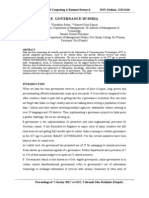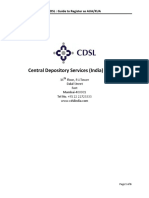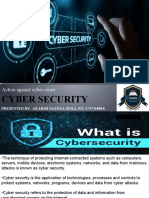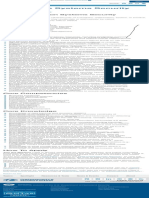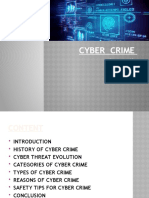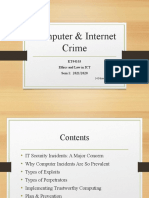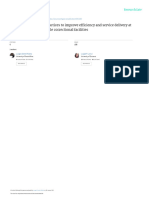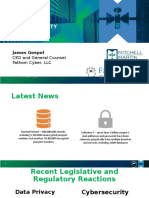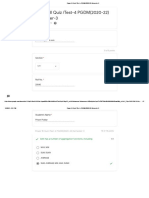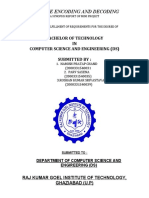0% found this document useful (0 votes)
209 views22 pagesCybersecurity & Data Privacy
This document discusses cybersecurity risks and opportunities. It provides an agenda for a presentation covering the cost of cybercrime and data breaches, cybersecurity maturity frameworks, data security objectives, and building effective cyber defenses. The presentation notes that cybersecurity risks threaten key enterprise objectives and outlines the top risk areas. It also shares statistics on the global cost of cybercrime and the average cost of data breaches. The document emphasizes regulatory compliance with various data protection laws and frameworks and identifies common cyber attack vectors such as weak credentials, misconfiguration, and social engineering. Finally, it introduces a comprehensive cybersecurity framework for key controls.
Uploaded by
Mugisa B. MustaphaCopyright
© © All Rights Reserved
We take content rights seriously. If you suspect this is your content, claim it here.
Available Formats
Download as PDF, TXT or read online on Scribd
0% found this document useful (0 votes)
209 views22 pagesCybersecurity & Data Privacy
This document discusses cybersecurity risks and opportunities. It provides an agenda for a presentation covering the cost of cybercrime and data breaches, cybersecurity maturity frameworks, data security objectives, and building effective cyber defenses. The presentation notes that cybersecurity risks threaten key enterprise objectives and outlines the top risk areas. It also shares statistics on the global cost of cybercrime and the average cost of data breaches. The document emphasizes regulatory compliance with various data protection laws and frameworks and identifies common cyber attack vectors such as weak credentials, misconfiguration, and social engineering. Finally, it introduces a comprehensive cybersecurity framework for key controls.
Uploaded by
Mugisa B. MustaphaCopyright
© © All Rights Reserved
We take content rights seriously. If you suspect this is your content, claim it here.
Available Formats
Download as PDF, TXT or read online on Scribd
/ 22
















